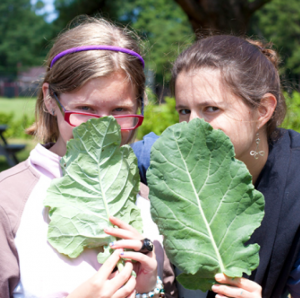According to 2017 data from the Youth Risk Behavior Survey* released by the Vermont Department of Health, high school students in Vermont who identified as lesbian, gay, bisexual, and/or transgender (LGBT) are significantly less likely to participate in extracurricular activities than their heterosexual/cisgender peers. Among the 20,077 high school students in Vermont that answered the question about participation in afterschool activities, 62% reported participating in between one and 19 hours per week. Among students that identified as both heterosexual and cisgender (not transgender) 63% participated in between one and 19 hours per week. However, among LGBT students, 53% participated in between one and 19 hours per week. Among students who reported that they were unsure of their sexual orientation, 56% participated in between one and 19 hours of afterschool activities per week.
LGBT students were also more likely to report that they did not participate in any afterschool activities. Forty-one percent of LGBT reported participating in zero hours of afterschool activities per week while 31% of students who identified as both heterosexual and cisgender reported the same. Thirty-eight percent of students who were unsure of their sexual orientation reported not participating in any afterschool activities.
Outright Vermont did some deeper analysis of the 2015 YRBS data with regard to lesbian, gay, and bisexual (LGB) youth (the 2015 survey did not include an option to report being transgender). LGB youth were more likely to report engaging in risky behaviors than their heterosexual peers (skipping school, being in a physical fight, using tobacco, using marijuana, binge drinking, feeling sad, hurting themselves, and attempting suicide). The CDC looked at the nationwide 2015 YRBS data and reported that LGB youth were at a greater risk of being bullied, being absent from school, having depression, attempting suicide, and contracting STDs. Transgender individuals are at an increased risk of developing depression and other mental health conditions. Alarmingly, 41% of transgender individuals will attempt suicide at some point in their lives.
Meanwhile, afterschool, summer learning, expanded learning, and out-of-school time programs can be important places to help youth stay safe and healthy. We know from research done by Fight Crime: Invest in Kids in 2000 and by UC Irvine in 2007 that when youth participate in afterschool activities, they are less likely to abuse drugs and other substances; have unprotected sex; and get into fights; and engage in other risky activities. The results from these studies also suggest that when students participate in afterschool activities, they are likely to get better grades and improve their social skills with peers.
And we know from the 2015 YRBS data analysis that these risk behavior outcomes are minimized and positive outcomes are maximized for high school students that participate in up to 19 hours of afterschool activities per week.
It is clear that LGBT youth in Vermont are more vulnerable than their heterosexual/cisgender peers for experiencing these negative outcomes. It is also clear that participation in afterschool activities help to lessen these negative outcomes and increase positive ones. So why are the LGBT youth in Vermont–those who arguably could stand to benefit the most from afterschool programming–not reaping these benefits at the same rate as their peers? This is a question that we need to ask repeatedly in order to identify the barriers that lead to fewer LGBT students participating in afterschool programs.
As a field, we need to work to increase access to afterschool programming for youth who identify as lesbian, gay, bisexual, transgender, as well as for those who are questioning their orientation or gender identity or who identify as gender non-conforming. We need to work on inclusion and safe spaces for all. Providing afterschool programs that cater specifically to LGBT youth such as this one in Ohio could be a starting point. Our work is truly cut out for us.
*Every two years, the Vermont Department of Health in partnership with the Vermont Agency of Education sponsor the Youth Risk Behavior Survey (YRBS) that is completed by middle school and high school students in the state. The YRBS is a national survey that is used to monitor risk behaviors that contribute to death and disability. In 2015, Vermont Afterschool’s application to include a question about participation in extracurricular activities on Vermont’s version of the high school survey was accepted. The question was renewed for the 2017 survey. In 2017, 20,653 high school students from 69 schools in Vermont completed the 109-item survey. For more information on YRBS, visit: healthvermont.gov/health-statistics-vital-records/population-health-surveys-data/youth-risk-behavior-survey-yrbs

